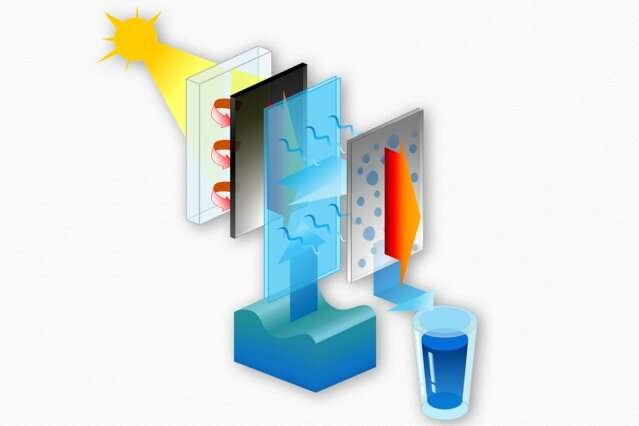
Simple, solar-powered water desalination
A completely passive solar-powered desalination system developed by researchers could provide more than 1.5 gallons of fresh drinking water per hour for every square meter of solar collecting area.
Such systems could potentially serve off-grid arid coastal areas to provide an efficient, low-cost water source.
The system uses multiple layers of flat solar evaporators and condensers, lined up in a vertical array and topped with transparent aerogel insulation.
The key to the system's efficiency lies in the way it uses each of the multiple stages to desalinate the water. At each stage, heat released by the previous stage is harnessed instead of wasted. In this way, the team's demonstration device can achieve an overall efficiency of 385 percent in converting the energy of sunlight into the energy of water evaporation.
The device is essentially a multilayer solar still, with a set of evaporating and condensing components like those used to distill liquor. It uses flat panels to absorb heat and then transfer that heat to a layer of water so that it begins to evaporate. The vapor then condenses on the next panel. That water gets collected, while the heat from the vapor condensation gets passed to the next layer.
Whenever vapor condenses on a surface, it releases heat; in typical condenser systems, that heat is simply lost to the environment. But in this multilayer evaporator the released heat flows to the next evaporating layer, recycling the solar heat and boosting the overall efficiency.
Adding more layers increases the conversion efficiency for producing potable water, but each layer also adds cost and bulk to the system.
Theoretically, with more desalination stages and further optimization, such systems could reach overall efficiency levels as high as 700 or 800 percent.
 English
English Arabic
Arabic


